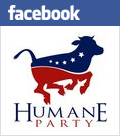IAMS DOG FOOD KILLS,MAIMS ANIMALS FOR RESEARCH!
"IAMS - the awful truth
1. Kidney failure and death inflicted on dogs
The first study referred to in the Express article tells how:
"...24 young dogs had their right kidneys removed and the left partly damaged to investigate how protein affects dogs with kidney failure. Eight dogs were killed to analyse the kidney tissue.
Dogs which became sick were not treated because it would have undermined the test results."
This study was part-funded by The Iams Company and reported in White J. V. et al, "Effect of dietary protein on functional, morphologic, and histologic changes of the kidney during compensatory renal growth in dogs", Am J Vet Res, Vol 52, No. 8, August 1991, pp. 1357 - 1365 (No.2 in tabulated file).
In the study, 24 young adult mixed breed dogs were given 'acute' (meaning 'rapid onset, severe symptoms') renal [kidney] failure. This was achieved by cutting the dogs twice in the abdomen area, removing one of the kidneys and destroying 75% of the remaining one by cutting off the blood supply to that proportion of the kidney. Thus the dogs were left with only one-eighth of normal renal function.
As many guardians of companion animals know only too well, kidney failure can cause terrible suffering. If kidneys don't function properly, waste products end up in the blood rather than being excreted. This blood poisoning can cause serious and fatal illness. Dogs with kidney failure may suffer "depression, loss of appetite, thirst and vomiting. The back may be arched, and there may be stiffness. There is fever, and sometimes ulcers are present in the mouth." (Black's Veterinary Dictionary: 292)
After renal failure was inflicted on the animals, 22 of them (it doesn't say what happened to the other two, maybe they died during the renal failure procedure?) were studied for up to 14 months as their kidney slowly regained some lost function.
The paper states:
"Dogs that became dehydrated were administered replacement fluids... Other supportive treatment was not administered."
Four dogs had to be put down during the experiment because of "severe uremia" ('the presence of excessive amounts of... waste products in the blood. ...their accumulation in the blood occurs in kidney failure and results in nausea, vomiting, lethargy, drowsiness and eventually death.' Oxford Medical Dictionary. Black's states that in cases of uraemia 'death may be preceded by convulsions and unconsciousness.')
After seven months, eight dogs were killed so the condition of their remaining quarter kidney could be examined. Seven months later the remaining ten dogs were killed.
2. Cats cut open and killed
This is the second experiment referred to in the Express piece:
"In another experiment, the stomachs of 28 cats were exposed so scientists could analyse the effects of feeding them fibre. The animals were operated on for at least two hours and then killed."
This study was also part-funded by IAMS and was reported in Bueno A. R. et al, "Feline colonic microbes and fatty acid transport: effects of feeding cellulose, beet pulp and pectin/gum arabic fibers", Nutrition Research, Vol. 20, No. 9, pp. 1319-1328, 2000. (No.1 in tabulated file)
The study used "twenty-eight adult female cats... All cats were short-haired females, 2 to 5 years of age and purchased from a government approved class-A distributor [Eds note: i.e. a vivisection breeding establishment]". The cats were split into groups of two or three, housed in indoor enclosures and fed differing diets for 2 to 3 weeks. One of the cats "was removed from the study for an unthrifty appearance." ['Unthrifty' is not a term found in medical dictionaries. Animals will be excluded from experiments if they differ from the rest of the group in a significant way, e.g. if their state of health is different, as this would undermine the design of the experiment. It doesn't state whether or not the cat was killed.]
On the day of the "colonic perfusion study" the animals were anaesthetised and "maintained at surgical anaesthesia", laid down on their sides, and their abdomens cut open. A catheter placed into the colon and a tube placed in the animals' rectum. Their bowels were then flushed empty.
For two hours, a test solution was pumped through the cats' bowels and collected every ten minutes.
This paper does not say whether the animals were killed before, during or after the next stage of the study - the removal of parts of their large intestine systems (caecum and colon), as this part of the study was reported in a different paper.
Although most of the cats may not have endured severe illness and suffering during the study, keeping animals in small indoor environments inevitably raises concerns about their ability to fulfil psychological needs, and the vivisection, killing and dismemberment of the cats are destructive and murderous acts.
3. Cats made obese and then starved - liver damage observed
This is the third experiment mentioned in the Express:
"The research team sterilised 24 female cats, which were over-fed until they become obese. They were then starved on a crash diet and when they had lost a third of their weight their livers were examined to investigate the link between weight loss and liver disease."
This IAMS-supported study is reported in Ibrahim W. H. et al, "Effect of dietary protein quality and fatty acid composition on plasma lipoprotein concentrations and hepatic triglyceride fatty acid synthesis in obese cats undergoing rapid weight loss", AJVR, Vol 61, No. 5, May 2000, pp.566-572. (No.13 in tabulated file)
The paper states: "Twenty-four female cats between 2 to 5 years old were purchased from a commercial dealer (Harlan Sprague Dawley, Indianapolis, Indiana.) Cats were individually housed..." After a week the cats were "ovariohysterectomized". They were then fed on a "high quality energy dense diet" (Eukanuba, produced by The Iams Company) until they became clinically obese (minimum of 30% over normal body weight) and could not gain any more weight - this point was reached at about eighty days. The researchers themselves note that:
"Obese cats are reported to be at greater risk for development of certain diseases, such as osteoarthritis, ligament injuries, perineal dermatitis (inflammation of the skin around the genitals), diabetes mellitus, lower urinary tract disease, and cardiomyopathy (heart disease). Mortality risk is also increased."
None of the cats are reported to have died during the study period as a result of obesity, though their clinical condition during their obesity was not commented upon.
Once the cats had reached obese proportions, they were placed on a diet that only provided them with 25% of their "energy requirements for 7 to 8 weeks, or until cats had lost 30 to 40% of their obese body weight". This was to mimic "rapid weight loss in cats". Two of the cats did not even manage to consume a quarter of their nutritional needs.
The researchers themselves acknowledge:
"Safe, rapid weight loss in cats can be difficult, because cats have special dietary requirements that appear to make them more susceptible than other species to HL."
HL stands for hepatic lipidosis, a disease of the liver which results in impaired liver function. The paper reports that the study caused three cats to develop HL during the weight loss period."
The cats also had to undergo three liver biopsies during the study.
4. Severe allergic reaction provoked in husky puppies
The Express article states:
"The company also sponsored research in which 14 husky puppies were repeatedly injected with live vaccines and allergy causing pproteins for the first 12 weeks of their lives. They developed permanent illnesses in the test, which was designed to see how severely allergic they would become."
This description is based upon an IAMS-funded study described in: Olson M. E. et al., "Hypersensitivity Reactions to Dietary Antigens in Atopic Dogs", Proceedings of 2000 IAMS Nutrition Symposium, p. 69-77. (No. 24 in tabulated file.)
This paper presents a study where 11 "Crossbred sled" new-born puppies were repeatedly (10 times over the first 85 days of life) injected with attenuated live virus vaccines containing Distemper, hepatitis and parvovirus together and subcutaneous injections of the food antigens. Another three animals were not sensitised but were subjected to the same procedures as the other dogs.
Skin tests were performed on the animals when they were six (to see if they had been "successfully" sensitised) and ten months of age. No mention of even a local anaesthetic (anaesthetics are referred to elsewhere in the paper - e.g. in describing the gastroscopic examinations). Four concentrations of each food allergen (soy, casein and chicken liver) were injected "intradermally". In most case the lowest concentration caused a skin reaction. The highest concentration that the dogs were injected with was 100,000 times stronger than the lowest concentration (0.02 micrograms vs 2000 micrograms). Histamine (causes inflammation) was also injected as a positive control, and saline as a negative control. Some of the higher concentration injections caused weals (similar to swellings caused by nettle stings or hives) averaging over a centimetre across.
Similar sensitivity tests (gastroscopic food sensitivity) were conducted by injecting the allergens into the stomach lining of the puppies. These were performed under anaesthetic. Once again, the higher concentrations caused marked allergic reactions: moderate to severe inflammation characterised by fluid filled swelling and redness caused by expansion of blood capillaries (erythema & oedema).
The results of these skin and stomach tests were reflected in the health of the allergic puppies when they were placed on allergic diets for a month. All eleven puppies:
"developed moderate to severe diarrhea and lost weight (data not shown). Furthermore 8 of the 11 sensitized dogs demonstrated dermatological reactions that included hair loss and pruritis [itching, similar to that found in eczema]... Clinical signs developed within the first week of feeding the sensitising diet and persisted as long as the diet was provided... Moderate to severe pruritis, with and without lesions, was also observed in sensitised dogs receiving diets containing the allergens."
5. Skin wounds inflicted on 36 dogs and puppies
The final experiment mentioned in the Express describes how:
"Twelve huskies, 12 poodles and 12 labradors were regularly given chest wounds to see if diet could affect fur regrowth. This was justified in the study on the grounds that 'dogs are enjoyable to touch and look at. Dogs with coat problems are simply not handled as much.' "
This IAMS-supported study is reported in Credille K. M. et al, "The Role of Nutrition on the Canine Hair Follicle: A Preliminary Report", Proceedings of the 2000 IAMS Nutrition Symposium. (No.23 in tabulated file)
The study involving repeated skin biopsies from 36 puppies and older dogs (12 Siberian Huskies, 12 Minature Poodles, 12 Labrador Retrievers). Each of the dogs had two 6mm sections of their skin removed under local anaesthetic every three weeks for 18 weeks. One would imagine this would cause soreness and discomfort to the dogs afterwards, each of which would end up with 12 wounds on their bodies after the 18 week study.
The researchers report that:
"Overall, there was little to distinguish the dogs fed the high- and low-quality diets;"
6. Finally... SmithKline Beecham helps supply dogs for IAMS vivisection
In an IAMS-funded lethal experiment on 15 healthy beagles which was reported in 1996 and was similar to the second experiment described above, the authors of the report "express their thanks to SmithKline Beecham Animal Health Laboratory... for their support in development and use of the research animals." (Hallman J. E. et al, "Colonic mucosal tissue energetics and electrolyte transport in dogs fed cellulose, beet pulp or pectin/gum arabic as their primary fiber source", Nutrition Research, Vol. 16, No. 2, pp. 303-313, 1996 (No. 9 in tabulated file).) SmithKline Beecham is now known as Glaxo SmithKline. It is one of the world's largest pharmaceutical companies and has a direct influence on UK Government policy, including animal experimentation policy, for which it has lobbied for a relaxation of regulations"
"Summaries of studies
Below are brief summaries of the IAMS animal experiments:
28 CATS' BELLIES WERE CUT TO SEE THE EFFECT OF FEEDING THEM FIBRE, THEN THE CATS WERE KILLED
University of Nebraska-Lincoln and The Iams Company. (AR Bueno, GD Sunvold & GA Reinhart (both IAMS CO.) et al., "Feline colonic microbes and fatty acid transport: effects of feeding cellulose, beet pulp and pectin/gum arabic fibers", Nutrition Research, Vol 20, No.9: 1319-1328 (2000).)
24 YOUNG DOGS WERE INTENTIONALLY PUT INTO KIDNEY FAILURE; SUBJECTED TO INVASIVE EXPERIMENTATION, THEN KILLED
University of Georgia and The Iams Company. (JV White, DA Hirakawa (IAMS CO.) et al., "Effect of dietary protein on functional, morphologic, and histologic changes of the kidney during compensatory renal growth in dogs", Am J Vet Res, Vol 52, No.8, August 1991: 1357-1365.)
31 DOGS' KIDNEYS WERE REMOVED TO INCREASE THE RISK OF KIDNEY DISEASE, THEN THEY WERE KILLED AND DISSECTED
University of Georgia and The Iams Company. (Delmar R Finco, Daniel P Carey (IAMS CO.), Diane A Hirakawa (IAMS CO.) et al., "Effects of aging and dietary protein intake on uninephrectomized geriatric dogs", Am J vet Res, Vol 55, No.9, September 1994: 1282-1290.)
BONES IN 18 DOGS' FRONT AND BACK LEGS WERE CUT OUT AND STRESSED UNTIL THEY BROKE
University of Wisconsin and The Iams Company. (Thomas D Crenshaw, Allan J Lepine (IAMS CO.) et al., "Nutritional Effects on Bone Strength in the Growing Canine", Proceedings of the 1998 Iams Nutrition Symposium: 29-40.)
10 DOGS WERE KILLED TO STUDY THE EFFECT OF FIBER IN DIETS
Mississippi State University and The Iams Company. (Randal K Buddington, Greg D Sunvold (IAMS CO.) et al., "Influence of fermentable fiber on small intestinal dimensions and transport of glucose and proline in dogs", AJVR, Vol 60, No.3, March 1999: 354-358.)
18 MALE PUPPIES' KIDNEYS WERE CHEMICALLY DAMAGED; EXPERIMENTAL DIETS WERE FED; TUBES WERE INSERTED IN THEIR PENISES, THEN THE PUPPIES WERE KILLED
Colorado State University and The Iams Company. (Gregory F Grauer, Gregory A Reinhart (IAMS CO.) et al., "Effects of dietary n-3 fatty acid supplementation versus thromboxane synthetase inhibition on gentamicin-induced nephrotoxicosis in healthy male dogs", AJVR, Vol 57, No.6, June 1996: 948-956.)
8 DOGS' KIDNEYS WERE REMOVED TO STUDY THE EFFECT OF PROTEIN ON RECOVERY FROM KIDNEY REMOVAL
University of Georgia and The Iams Company. (JV White, DA Hirakawa (IAMS CO.) et al., "High dietary protein intake does not accelerate development of renal lesions during recovery from renal mass reduction in dogs", ACVIM Abstracts, Vol 3 No 2, p.131)
28 CATS WERE SURGICALLY FORCED INTO KIDNEY FAILURE AND EITHER DIED DURING THE EXPERIMENT OR WERE KILLED TO STUDY THE EFFECTS OF PROTEIN
University of Georgia and The Iams Company. Delmar R Finco, Gregory D. Sunvold (IAMS CO.) et al., "Influence of Protein and Energy in Cats with Renal Failure", Proceedings of the 1998 Iams Nutrition Symposium: 413-424.)
15 DOGS' BELLIES WERE CUT OPEN; TUBES WERE ATTACHED TO THEIR INTESTINES, THE CONTENTS OF WHICH WERE PUMPED OUT EVERY 10 MINUTES FOR TWO HOURS, THEN THE DOGS WERE KILLED
University of Nebraska-Lincoln and The Iams Company. (JE Hallman, GA Reinhart (IAMS CO.) et al., "Colonic mucosal tissue energetics and electrolyte transport in dogs fed cellulose, beet pulp or pectin/gum arabic as their primary fiber source", Nutrition Research, Vol 16, No.2: 303-313 (1996).)
16 DOGS' BELLIES WERE CUT OPEN AND PARTS OF THEIR INTESTINES TAKEN
University of Alberta and The Iams Company. (Stefan P Massimino, Michael G Hayek (IAMS CO.), Gregory D Sunvold (IAMS CO.) et al., "Fermentable Dietary Fiber Increases GLP-1 Secretion and Improves Glucose Homeostasis Despite Increased Glucose Transport Capacity in Healthy Dogs", Journal of the American Society for Nutritional Sciences: 1786-1793 (1998).)
HEALTHY PUPPIES, CHICKS, AND RATS HAD BONE AND CARTILAGE REMOVED TO STUDY BONE AND JOINT DEVELOPMENT
Purdue University and The Iams Company. (Bruce A Watkins, Allan J Lepine (IAMS CO.), C. Gregory Aldrich (IAMS CO.), Michael G Hayek (IAMS CO.), et al., "Relationships of Fat Quality and Antioxidants in Bone and Cartilage", Proceedings of the 2000 Iams Nutrition Symposium: 505-514.)
INVASIVE PROCEDURES WERE USED TO STUDY BACTERIA IN 16 DOGS' INTESTINES
Texas A&M University and The Iams Company. (MD Willard, G Reinhart (IAMS CO.), et al., "Effects of dietary supplementation of fructo-oligosaccharides on small intestinal bacterial overgrowth in dogs", Am J Vet Res, Vol 55, No.5, May 1994: 654-659.)
24 CATS HAD THEIR FEMALE ORGANS AND PARTS OF THEIR LIVERS REMOVED; WERE MADE OBESE, THEN WERE STARVED
University of Kentucky and The Iams Company. (Wissam H Ibrahim, Gregory D Sunvold (IAMS CO.) et al., "Effect of dietary protein quality and fatty acid composition on plasma lipoprotein concentrations and hepatic triglyceride fatty acid synthesis in obese cats undergoing rapid weight loss", AJVR, Vol 61, No.5, May 2000: 566-572.)
56 DOGS HAD THEIR FEMALE ORGANS REMOVED TO STUDY BETA CAROTENE
Washington State University and The Iams Company. (BC Weng, AJ Lepine (IAMS CO.), et al., "Beta-Carotene uptake and changes in ovarian steroids and uterine proteins during the estrous cycle in the canine", J. Anim. Sci. 2000. 78:1284-1290.)
16 DOGS' BELLIES WERE REPEATEDLY CUT TO TAKE PARTS OF THEIR INTESTINES
Texas A&M and The Iams Company. (MD Willard, DP Carey (IAMS CO.), GA Reinhart (IAMS CO.) et al., "Characterization of naturally developing small intestinal bacterial overgrowth in 16 German Shepherd Dogs", JAVMA, Vol 204, No. 8, April 15, 1994: 1201-1206.)
6 DOGS HAD TUBES IMPLANTED INTO THEIR INTESTINES AND FLUID DRAINED REPEATEDLY TO STUDY CEREAL FLOURS
University of Illinois and The Iams Company. (SM Murray, GD Sunvold (IAMS CO.), GA Reinhart (IAMS CO) et al., "Evaluation of Selected High-Starch Flours as Ingredients in Canine Diets", J. Anim. Sci. 1999. 77:2180-2186.)
30 DOGS WERE WOUNDED AND PATCHES OF SKIN CONTAINING THE WOUNDS REMOVED TO STUDY WOUND-HEALING
Auburn University and The Iams Company. (Mark A Mooney, Gregory A Reinhart (IAMS CO.) et al., "Evaluation of the effects of omega-3 fatty acid-containing diets on the inflammatory stage of wound-healing in dogs", AJVR, Vol 59, No. 7, July 1998: 859-863.)
5 DOGS' BELLIES WERE CUT OPEN AND TUBES WERE INSERTED FROM THEIR INTESTINES TO THE OUTSIDE OF THEIR BODIES TO STUDY THE EFFECTS OF FIBER
University of Illinois and The Iams Company. (HE Muir, GA Reinhart (IAMS CO.) et al., "Nutrient Digestion by Ileal Cannulated Dogs as Affected by Dietary Fibers with Various Fermentation Characteristics", J. Anim. Sci. 1996. 74: 1641-1648.)
PARTS OF 28 DOGS' LARGE INTESTINES WERE REMOVED TO STUDY THE EFFECTS OF FIBER
University of Missouri and The Iams Company. (MD Howard, GD Sunvold (IAMS CO.), GA Reinhart (IAMS CO.) et al, "Dietary fiber sources alter colonic blood flow and epithelial cell proliferation of dogs", J. Anim. Sci. 1997. 74(Suppl. 1).)
PARTS OF 16 DOGS' INTESTINES AND IMMUNE SYSTEM WERE CUT OUT TO STUDY THE EFFECTS OF FIBER
University of Alberta and The Iams Company. (Catherine J Field, Michael G Hayek (IAMS CO.), Gregory D Sunvold (IAMS CO.) et al., "Interaction of Fiber Fermentation and Immunology of the Gastrointestinal Tract", Proceedings of the 1998 Iams Nutrition Symposium: 523-530)
5 DOGS HAD TISSUE FROM LARGE AND SMALL INTESTINES REMOVED TO STUDY INTESTINAL TRACT NEEDS
University of Illinois and The Iams Company. (James K Drackley, Gregory D Sunvold (IAMS CO.) et al, "Energetic Substrates for Intestinal Cells", Proceedings of the 1998 Iams Nutrition Symposium: 463-472.)
8 HEALTHY DOGS HAD TUBES INSERTED THROUGH THEIR CHESTS TO STUDY FAT ABSORPTION
The Ohio State University and The Iams Company. (Jennifer D Newton, GA Reinhart (IAMS CO.), et al., "Transport Pathways of Enterally Administered Medium-Chain Triglycerides in Dogs", Proceedings of the 2000 Iams Nutrition Symposium: 143-152.)
SECTIONS OF 36 DOGS' SKINS WERE CUT OUT TO STUDY EFFECTS OF DIET ON FUR
Texas A&M and The Iams Company. (Kelly M Credille, GA Reinhart (IAMS CO.), GM Davenport (IAMS CO.) et al., "The Role of Nutrition on the Canine Hair Follicle: A Preliminary Report", Proceedings of the 2000 Iams Nutrition Symposium: 37-53.)
14 PUPPIES WERE INJECTED WITH SUBSTANCES THAT GAVE THEM LIFE-LONG ALLERGIES, MADE THEM SICK, AND GAVE THEM DIARRHOEA
University of Calgary and The Iams Company. (Merle E Olson, Michael G Hayek (IAMS CO.) et al., "Hypersensitivity Reactions to Dietary Antigens in Atopic Dogs", Proceedings of the 2000 Iams Nutrition Symposium: 69-77.)
Please contact IAMS to let them know your disgust at these animal experiments. Phone them on 0800 426 785 or email customer.service@Iams.com."
HERE IS THE LINK TO JOIN THE CAUSE TO STOP THIS BEHAVIOR! THIS CAUSE IS LOCATED ON FACEBOOK -
http://apps.facebook.com/causes/22063/23193445?m=cc366e79
INFORMATION RESOURCE
http://www.uncaged.co.uk/iams01.htm

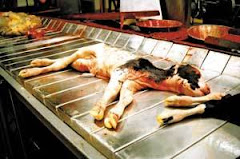



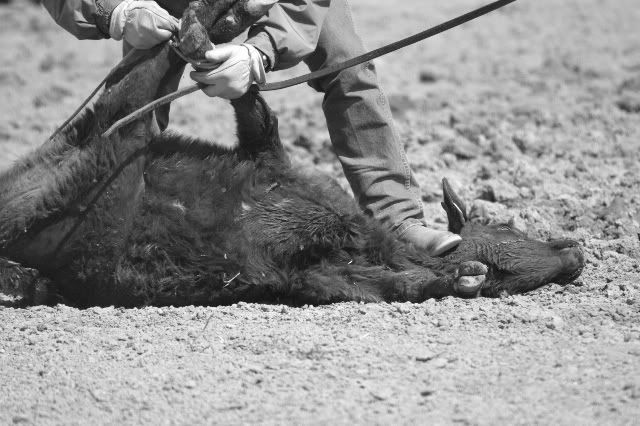

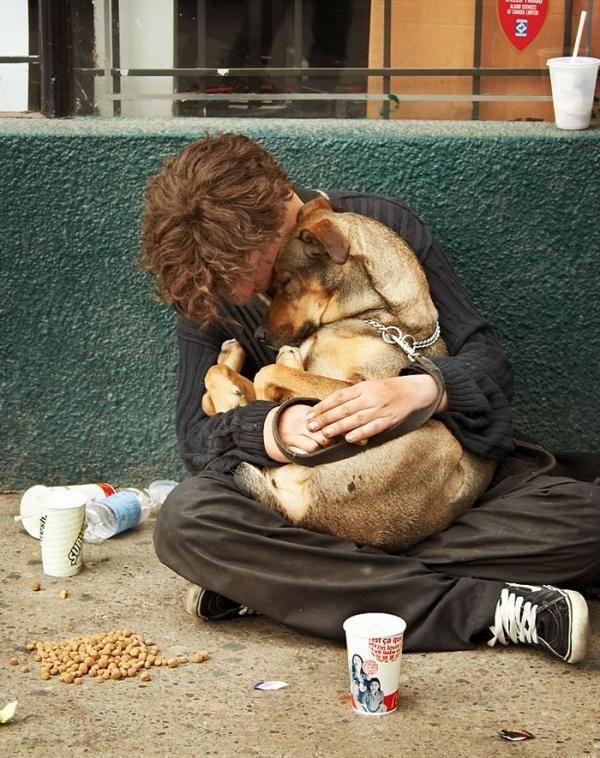

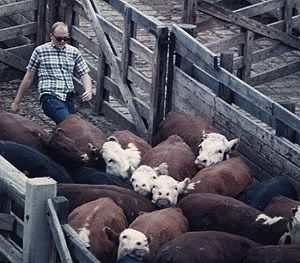








.jpg) More than 20,000 orangutans have been poached, killed by loggers or sold into the illegal pet trade in the past 10 years, according to a new
More than 20,000 orangutans have been poached, killed by loggers or sold into the illegal pet trade in the past 10 years, according to a new 






